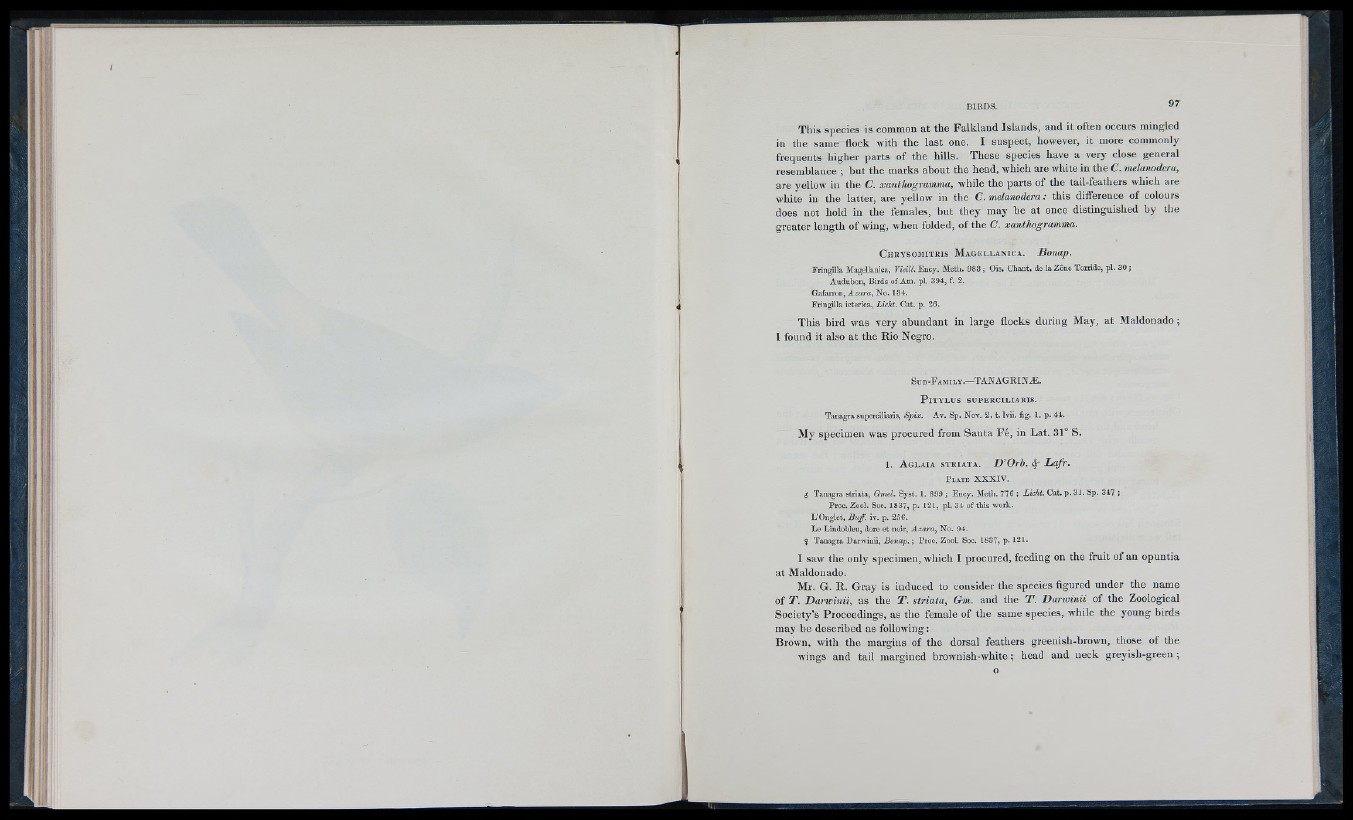
This species is common at the Falkland Islands, and it often occurs mingled
in the same flock with the last one. I suspect, however, it more commonly
frequents higher parts of the hills. These species have a very close general
resemblance ; hut the marks about the head, which are white in the C. melanodera,
are yellow in the C. xantlwgramma, while the parts of the tail-feathers which are
white in the latter, are yellow in the C. melanodera: this difference of colours
does not hold in the females, but they may be at once distinguished by the
greater length of wing, w'hen folded, of the C. xanthogramma.
Cheysomiteis Magellanica. Botiap.
Fringilla Magellanica, Vidll. Ency. Meth. 983; Ois. Chant, de la Zone Torride, pl. 30;
Audubon, Birds of Am. pl. 894, f. 2.
Gafarron, A ltara, No. 134.
Fringilla ictérica, Licht. Cat. p. 2C.
This bird was very abundant in large flocks during May, at Maldonado;
1 found it also at the Rio Negro.
S u b - F a m il y .— TANAGRINiE.
P iT Y L U S SUPERCILIARIS.
Tanagra superciliaris, Spix. Av. Sp. Nov. 2. t. Ivii. fig. 1. p. 44.
My specimen was procured from Santa Fe, in Lat. 31° S.
1 . A g l a ia s t r ia t a . D'Orh. ^ Lafr.
P l a t e XXX IV.
$ Tanagra striata, Gmel. Syst. 1. 899 ; Ency. Meth. 776 ; Licht. Cat. p. 3 i. Sp. 847 ;
Proc. Zool. Soc. 1837, p. I2 l , pl. 34 of this work.
L’Onglet, Biiff. iv. p. 256.
Lc Lindobleu, dore et noir, Azara, No. 94.
? Tanagra Darwinii, Bonap. ; Proc. Zool. Soc. 1837, p. 121.
I saw the only specimen, which I procured, feeding on the fruit of an opuntia
at Maldonado.
Mr. G. R. Gray is induced to consider the species figured under the name
of T. Darwinii, as the T . striata, Gm. and the T. Dartvinii of the Zooiogical
Society’s Proceedings, as the female of the same species, while the young birds
may be described as following:
Brown, with the margins of the dorsal feathers greenish-brown, those of the
wings and tail margined brownish-white; head and neck greyish-green ;
o
I